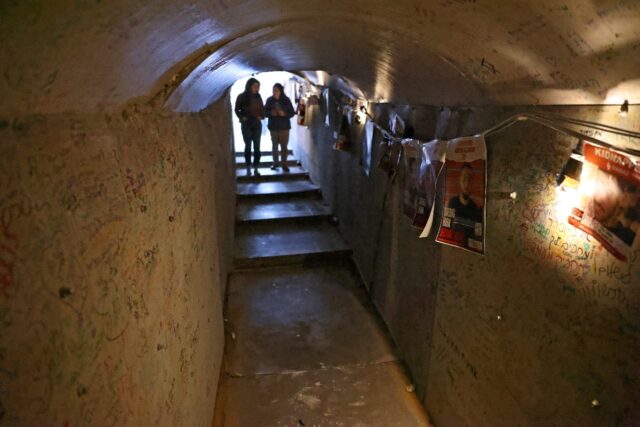
Mandy Hoyland doesn’t know any of the 130 hostages being held in Gaza by Hamas. But she was still emotional as she wandered through Tel Aviv’s “Hostages Square”.
After travelling from Beit Shemesh, around 60 kilometres (37 miles) from Tel Aviv, the 63-year-old did not hide her pain as she examined photos of the hostages displayed across the plaza.
“I feel a lot of sorrow, truly, and sadness… I don’t know any hostages but they are our brothers and sisters,” she told AFP.
From the first day after Hamas’s surprise October 7 attack on Israel, the square became a gathering point for families and a pilgrimage site for those supporting them.
According to Israel, 130 hostages remain in the Gaza Strip, including 29 believed to have died, out of a total of 253 people taken captive by Hamas.
The Hostage and Missing Families Forum, a group created on October 8, manages activities in the plaza, renamed Hostages Square by the city council on October 24.
Among the tents of hostage families and the Forum’s stalls selling various items, volunteers guide groups and introduce them to relatives of hostages.
Two classes from a school in Beersheva in the south entered a narrow mock tunnel built by the Forum to show visitors the conditions in which the hostages are being held.
Along a few dozen metres (yards), past walls covered with photos of hostages, they walked slowly in darkness, hidden speakers playing the sound of explosions.
‘Preparing for the worst’
At the tunnel exit, a tent welcomed visitors. Avivit Yablonka, 48, recounted the story of her brother Chanan, 42, who was abducted while he was with friends at the Nova music festival.
More than 360 people were killed at the festival by Hamas, with some reportedly raped or mutilated before being shot.
“Being the sister of a hostage is hoping for the best but preparing for the worst,” said Yablonka.
Along with her family, she had to wait 90 days before receiving official confirmation that her brother, a former footballer, was a hostage.
“We have had no proof of life, but they told us he is in Gaza,” she said.
Holding a photo of her brother, she responded patiently to questions from the students, some of whom hugged her after the presentation.
One young girl asked her how she could keep living normally after more than 120 days like this.
“We live in the present moment, from day to day. I am sad but I have to keep living for my family and for my brother’s children,” she responded, smiling softly.
“It is important that young people come to this place so that they can ask questions and not see us only on their television screens,” she told AFP.
Every Saturday evening in the square, thousands of people protest to demand the return of the hostages. But throughout the week it is visited by everyone from diplomats to students to relatives.
‘Their suffering is not forgotten’
“Entire buses of people come from all over the country to show solidarity with the hostages and their families,” Noa Haviv, a Forum volunteer wearing a “Bring them home now” T-shirt, told AFP.
“Our objective is to stand alongside the hostage families and for it to remain on the minds and in the hearts of everyone,” she added.
Behind her stretched a long table set for many people and intended to welcome each of the hostages upon their return for a festive meal.
The table is partly covered in dirty water bottles and aluminium mess tins, to symbolise the Gaza hostages’ captivity.
Visitors can take home portraits of the hostages and yellow ribbons that many Israelis wear on their wrists as a sign of solidarity.
T-shirts, badges, hats, bags and even umbrellas with the slogan calling for the return of the hostages are for sale, with all proceeds going to the Forum.
Groups take photos of the giant hourglass or the wall clock counting the days, hours, minutes and seconds that have elapsed since October 7.
Other visitors come every day to show their support for the hostages, like the peace activists of Women Wage Peace.
“We must be there to remind them that their suffering is not forgotten,” said that organisation’s Ofra Perel-Dekel.
When night fell on the square a group could be heard singing a popular song: “Don’t forget that there’s always hope.”
